Approximately three years ago this weekend I came downstairs from my bedroom only to find water that came over my feet. Thinking like every good reefer, I immediately thought that my tank had sprung a major leak and was flooding the second floor of my house.
Now at the time the only tank I had on that floor was a 75-gallon one, but having had it ingrained into my head that any problem in the house was the fault of me and my aquariums, I nonetheless blamed it initially. Fortunately, the tank was intact and had not dripped a drop in to the flood.
Unfortunately, the jet that fills the commode had ruptured and during the course of my six-hour sleep had managed to release over 2,000 gallons of water onto the second floor of my house. Luckily my main tank and the other near it were on the other side of the tank so their contents were not diluted, which would have produced even more problems.
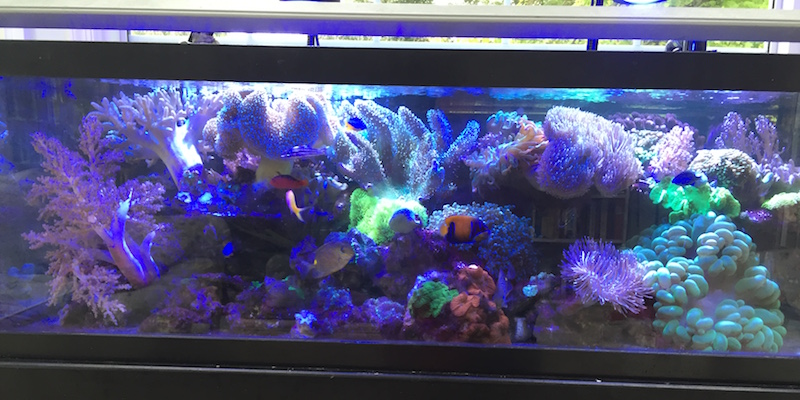
While this does not seem to have any relationship to our hobby, the problem with leaks, drip and other issues came to the forefront again for me this week when a line going into my RO/DI unit came apart and shot 200 gallons of water, TWICE, as I didn’t learn the first time, onto the floor of my basement. As a result of this, I thought it might be a good time to take a break from my world tour articles and talk about something we all know happens: water where we don’t want it.
I know the old adage is don’t cry over spilled milk, which may be good advice to follow, but I know that most spouses or significant others do not forget when we have a major issue with the saltwater from our tanks being somewhere where it shouldn’t be. I have a tank that sits near me where where fish love to splash and I have had guests get splashed even with a couple of drops of water and not be happy.
Worse, I was involved with a tank where the bottom split and as a result 4000 gallons of saltwater was dumped into the basement of his house. Needless to say, the latter case was worse, but in reality a leak or spill of any kind from one of our tanks can lead to let’s say at best friction in a relationship or at worst a very heated discussion.
Look, we all know we are going to have a spill or leak or drip water somewhere and it will usually happen at the worst time and on the most expensive thing in the house, so the question is what can we do about it?
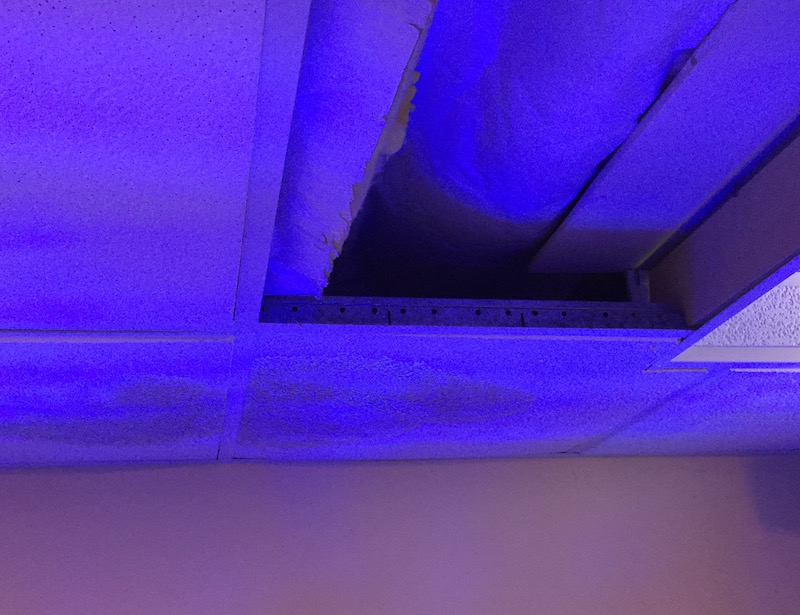
First, don’t lie to your spouse when you set up the tank and tell them you will never spill a drop. The reason for not doing this is simple, they will remember your saying that and will bring it up every time even if just the humidity in your house goes up. I have found it better to say, I know you are worried about a leak or spill but I am taking every precaution to prevent one from happening and am prepared in case one does occur. But you can’t just say that, you actually have to think ahead and be prepared. So in this regard I have worked to prevent leaks or spills and am prepared if one happens.
At this point you may be asking yourself how do you prevent leaks or spills and unfortunately the answer to preventing or reducing these is not easy. I have found, however, that there are a number of things we can do that can reduce them. First I try to hard plumb as much of my tank as possible and use as few flexible hoses as I can.
This is done because over time hoses tend to shrink and crack after being exposed to saltwater and when a leak does occur it is always when I am sleeping or out of town. If a hose is needed, it always fits as snugly on a barb fitting as possible. In the best scenario it is on so tight that it needs to be heated up in hot water before being placed on the fitting and then as it cools it almost bonds onto the barb.
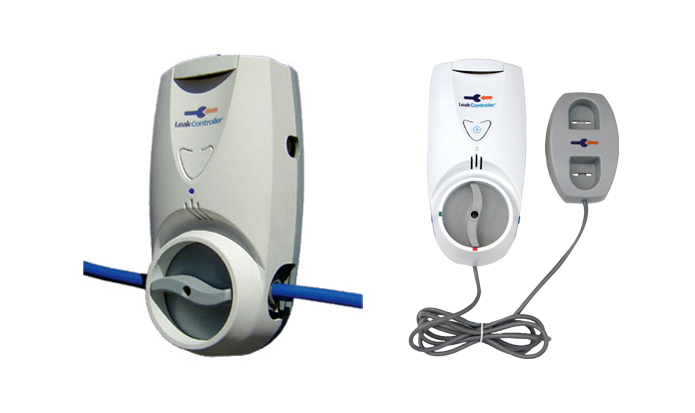
And to further decrease the likelihood of it leaking all hoses are clamped onto the fitting as well, even if the hose is in water. This is done as not only to hoses tend to shrink over time, but most of them are also exposed to vibrations, and if these precautions aren’t taken the likelihood of a water issue will always be there. [Ed. Note: Zip-tie all the things!]
If you are lucky enough to be able to hard plumb, that is use PVC pipe or something similar, to plumb the tank then there are also things you need to do when doing this as well to reduce the likelihood of a leak. First, all PVC fitting should be cleaned with the purple PVC cleaner and allowed to dry before being glued.
This may seem trivial, but I have glued countless fittings both clean and uncleaned, and when I have had an issue with a fitting coming apart invariably it seemed to be one that was not cleaned. Or if they were all cleaned the only time I have had them come apart was when I did not give the PVC adequate time to dry before exposing it to saltwater. So plan ahead and give the pipes and fittings time to cure completely before running water through them.
If you are able to hard plumb everything, then you should also use gate valves and unions around any equipment that will need to be cleaned or potentially replaced over time. This may seem like an unnecessary expense, but if you can’t close off the source of water and you need to saw something off to fix it or clean it, odds are there is going to be water on the floor somewhere.
Not all fittings are slip to slip, that is glued together, many can be screwed together, with there being male and female fittings. For most of my time plumbing my tanks, I preferred these types of fittings as they are easy to find and easy to take apart. However, I also found over time that some of them leaked and I never understood why.
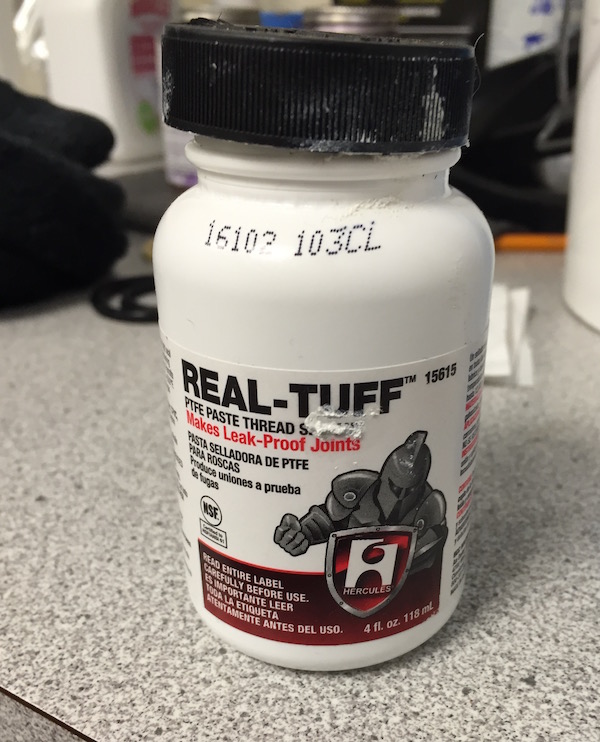
Fortunately, I had the opportunity to talk with a master plumber about this and the reason is simple: I was using Teflon tape to put on the male threads before the fittings were screwed together.
He informed me that PVC fittings are not for the most part water tight under pressure when Teflon tape is used. Instead he recommended something called Real-Tuff to apply to the male fittings that would make them water tight. Since I have been using this I have to admit to no leaks from these fittings. Not even the pin hole leaks that used to drive me crazy.
Plumbing, however, is just one source of leaks or drips. I have also found that loose hoses, salt spray and untended refill systems can also be major sources of spills. What I mean by loose hoses are any hose that some unsuspecting person can bump or pull that results in water being where it should not be.

In my own case, the slow flowing line from my calcium reactor was a constant source of spills in that it was in a place such that small kids seemed to constantly want to take it out of the tank, or worse when I was in a rush I would inadvertently pull it slightly out of the sump.
Because the flow through it is so slow, less than a gallon an hour, there is not rapid rush of water on the floor, so as a result it usually takes a while, usually the morning after it was pulled out, before its damage would be noticed. So to prevent this from happening it is now firmly anchored to the tank, so it can’t be pulled out.
In the same vein, all refill and reservoir hoses for make up water are now also firmly anchored in place. These produced similar issues as unless a refill of the tank was occurring they were dry. So they could be pulled out of place with no notice. However once the tank or reservoir needed to be refilled the water that they should have been putting into these quickly spilled onto the floor. So that is why they too are now immovable.
Lastly in terms of prevention, on should also make sure that any overflows drains or other means for taking water from a tank are oversized so that if any blockage occurs they will not overflow. Even better would be if some redundancy is built in so that if an overflow would be blocked, a second way for the water to flow in the system could occur. Again as with most things, a blockage of the overflow due to detritus or a dead fish or whatever always seems to occur when you are sleeping or away, so plan accordingly.
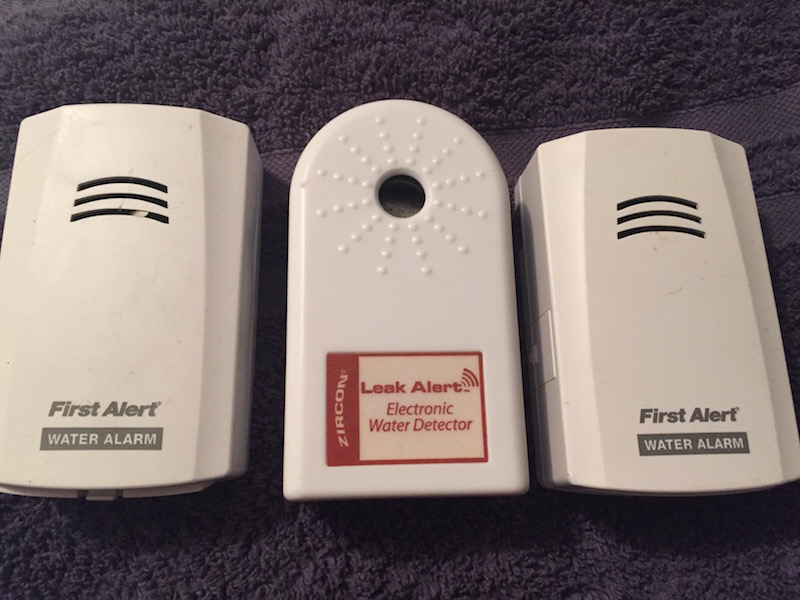
Despite having the best laid plans of mice and men spills, and leaks will still occur, so in this regard you need to be prepared. Having spilled an ocean of water over the years I think I am well-qualified to help in your preparation. First, try to get to the spill or leak as quickly as possible.
So in order to reduce the leak or spill from being massive, leak detectors are in place all around my tanks. This little electronic devises act like smoke detectors for water and emit the same shrill tone should any water come in contact with them. Saltwater seems to set them off even faster than freshwater.
They are around $10 apiece so at that price they are well worth the money to prevent the floor, carpet, or ceiling from being destroyed from a bad leak. There are even high tech ones, obviously for more money, that can send you an alert, should a leak occur while you are sleeping or away.
Despite having those devices, big leaks and spills can still occur, so to help with the clean up three devices come in handy. First, on the low tech side, save as many old towels as you can. I have close to 50 towels in my house and sadly have had to use the far more often than I would like to admit. But for sopping up a wet mess fast there is nothing better.

Second I also have a wet/dry Shop Vac for drawing off water as well. If water has pooled I use the Shop Vac first and then the towels dry the area off as much as possible. However, I also have 3 tanks over carpeting and have had a couple of spills on the carpet.
Now you can use the Shop Vac and towels to dry the carpet, and it will seem dry on the surface, however underneath the carpet is padding. And while it is called padding, it is actually a big sponge and as such if you do not get it dry it will act as a moisture reservoir for a long time and produce the kind of mod and mildew that your significant other will never forget.
So in order to dry the carpeting you need a fan, and not just a simple box fan, but really an industrial fan that home reclamation crews use. And you also need to know that you can and need to lift up the carpeting and padding and get the flow from the fan underneath it to dry it completely.
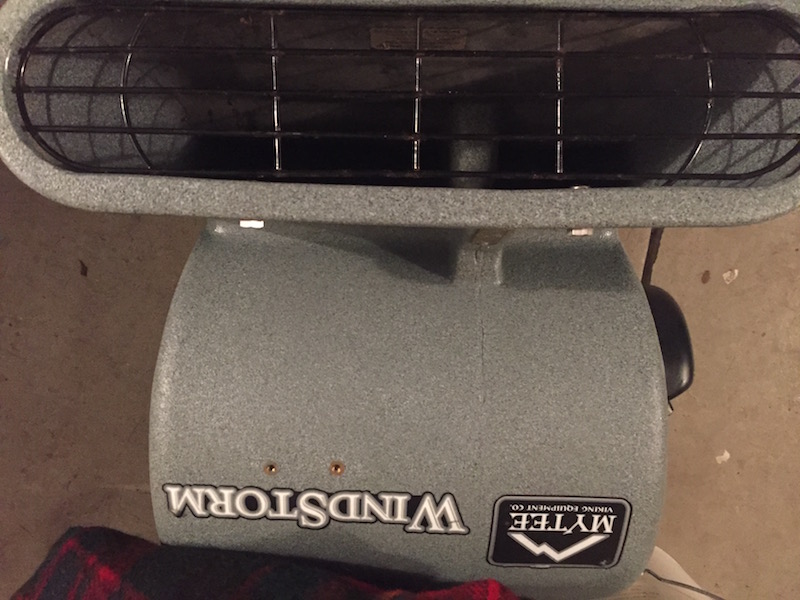
Most carpeting is held in place with nail boards, so all you need to do is get to the edge and with a flat head screwdriver lift the carpet and padding off the board bit by bit and then have the fan blow underneath it to dry it. Once it has dried it may seem like it has shrunk a bit so you need to pull it and kind of stretch it to get it back into place. And then you can nail it back down with a mallet. Sadly, I have become a master of drying carpets due to my own stupidity, but I hope my experience will be helpful.
Having a leak or spill from a tank is kind of inevitable, but with proper planning and preparation its likelihood can be reduced and its size minimized. But if you are wavering in doing some of the things suggested, I should point out that that 2,000- gallon leak of clean water that I mentioned at the beginning produced about $30,000 in damages.
However, that pales compared to the 4,000-gallon spill of saltwater, as that produced almost $200,000 in damages. So considering how expensive it could be you might want to make sure that your chances of a major leak or spill are minimized. And if you do nothing else as a result of this article other than this you might be spared a major problem.
Please please shut off your mains water supply when you go on vacation, even if it is just for a long weekend. As my insurance adjuster told me, she covers at least two large claims a month due to water damage and felt that half of them could have been reduced if people had just shut off their water main when they went away.



